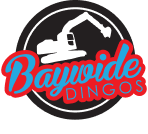What Fertilizer to use on your lawn?
WHAT LAWN FERTILIZER TO CHOOSE?
- Why Fertilize your lawn?
- Which one to choose?
- How to Read a Fertilizer Label?
A lush and actively growing lawn uses a huge amount of energy.
Your soil supplies some of the nutrients required for growth but most soils are unable to supply these nutrients during the entire year, especially in Hawkes Bay (Napier, Hastings & Havelock) where it is very hot and dry in the summer months. Did you know fertilizing your lawn also helps:
- Reducing weeds
- Promoting new root and leaf growth
- Improving recovery from foot traffic or damage
- Replacing lost nutrients from lawn mowing and soil leaching
Quick-release fertilizer typically lasts for three to four weeks, depending upon the temperature and the amount of rainfall.
There are two main types of slow-release fertilizers.
- Sulfur coated, which lasts for about 8 weeks.
- Polymer coated, lasting about 12 weeks.
You should aim to fertilize your lawn in spring when your lawn is starting to show signs of growth with the appropriate time frame so the fertilizer is not working during the intense heat of summer.
Fertilize again the same time leading into Autumn when the lawn takes off again and not working during winter.
The three numbers (often called NPK) on a fertilizer package tell you the percentage of the base elements nutrient makeup by
weight.
- Nitrogen (N) for leaf development & vivid green color.
- Phosphorous (P) for root growth.
- Potassium (K) for root development & disease resistance.
For example, a bag marked “16-4-8” contains 16 percent nitrogen, 4 percent phosphorous and 8 percent potassium. The remainder is made up of filler and inert material to help distribution.
